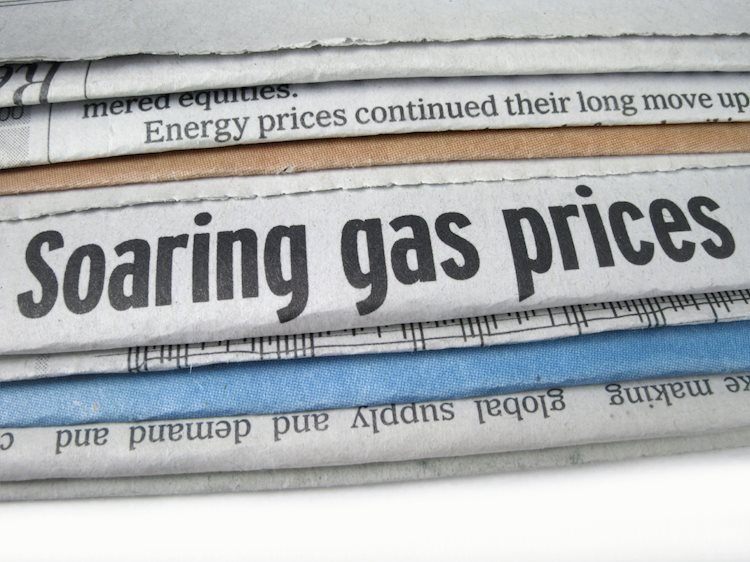- Natural Gas faces downside as demand remains subdued while supply builds bigger by the day.
- Natural Gas prices could sinks to $2.
- The US Dollar snaps its three-day-winning streak after BoJ surprise comments.
Natural Gas (XNG/USD) is facing more downturn as the economic balance is shifting towards a supply surplus. All pipes are open and gas is flowing from all regions to Europe at normal to some even elevated volumes, which means that Europe is set to survive this winter fairely easily. Meanwhile the US has jacked up its oil and gas production, to further run down oil and gas prices in global markets, with US President Joe Biden seeking to set a positive tone for the Democrats in the upcoming presidential elections late 2024.
Meanwhile, the US Dollar (USD) is facing a brief hiccup in its rally this week. The Central Bank of Japan (BoJ) has issued a message to the markets that there might be an end to its decade-long negative rate regime. The Japanese Yen rallied over 1.5% against the Greenback in Asian trading and is still holding on to those gains, while traders see in-line US weekly Jobless numbers not moving the needle.
Natural Gas is trading at $2.51 per MMBtu at the time of writing.
Natural Gas market movers: small uptick
- A split view on gas prices this Thursday as European futures are up over 3%, while US futures are down over 3%. The European Gas prices are popping higher as European gas reserves are under a bit of pressure due to the cold front in Europe.
- A Bloomberg report published on December 7 revealed a Liquified Natural Gas (LNG) surplus until at least 2025. The surplus comes from several market participants having increased their supply in order to take the place of the Russian supply towards Europe.
- Norwegian Gas flow is heading toward Europe at the largest volume above the five-day moving average.
- Gaza tensions remain contained for now, with the conflict not endangering the Gas flow out of the Middle East to Europe.
- At 15:30 GMT the US Energy Information Administration (EIA) will release the weekly Gas storage numbers. Previous number was a build of 10 billion cubic metres of Gas. A drawdown of 105 billion is expected. The estimates range between a drawdown of 102 minimum to a 119 maximum billion cubic metres.
Natural Gas Technical Analysis: More downside is logic
Natural Gas in the US is nose diving alongside the decline in Crude Oil prices. The US is flooding the energy complex with supply, which is already running at a surplus with no bottlenecks at hand in the Middle East despite the Gaza tensions. Expectations are to see more downside as supply is likely to be persistent and not face any issues in the nearterm.
Sentiment could quickly change overnight, when for example Gaza tensions do spill over into the wider Middle East, or should a severe winter erode all European Gas reserves ahead of spring, Natural Gas could edge up to $3.00 as the level to watch. Just above, the 100-day Simple Moving Average (SMA) at $3.01, could throw a brief spanner in the works. Once bulls have dealt with a break above this 100-day SMA, look for $3.06 and $3.20 as next profit levels on the upside.
With the support of the 200-day SMA gone now, a further decline will target two intermediary levels on the downside. The purple line near $2.57, which triggered a bounce on August 24, has been broken as well. The low of the summer near $2.48 is trying to halt the decline for now, before Gas prices might sink to $2.10.
XNG/USD (Daily Chart)
Natural Gas FAQs
Supply and demand dynamics are a key factor influencing Natural Gas prices, and are themselves influenced by global economic growth, industrial activity, population growth, production levels, and inventories. The weather impacts Natural Gas prices because more Gas is used during cold winters and hot summers for heating and cooling. Competition from other energy sources impacts prices as consumers may switch to cheaper sources. Geopolitical events are factors as exemplified by the war in Ukraine. Government policies relating to extraction, transportation, and environmental issues also impact prices.
The main economic release influencing Natural Gas prices is the weekly inventory bulletin from the Energy Information Administration (EIA), a US government agency that produces US gas market data. The EIA Gas bulletin usually comes out on Thursday at 14:30 GMT, a day after the EIA publishes its weekly Oil bulletin. Economic data from large consumers of Natural Gas can impact supply and demand, the largest of which include China, Germany and Japan. Natural Gas is primarily priced and traded in US Dollars, thus economic releases impacting the US Dollar are also factors.
The US Dollar is the world’s reserve currency and most commodities, including Natural Gas are priced and traded on international markets in US Dollars. As such, the value of the US Dollar is a factor in the price of Natural Gas, because if the Dollar strengthens it means less Dollars are required to buy the same volume of Gas (the price falls), and vice versa if USD strengthens.

-638375431301348880.png)
 This “NEW CONCEPT” Trading Strategy Prints Money!… (INSANE Results!)
This “NEW CONCEPT” Trading Strategy Prints Money!… (INSANE Results!)

 RULE-BASED Pocket Option Strategy That Actually Works | Live Trading
RULE-BASED Pocket Option Strategy That Actually Works | Live Trading